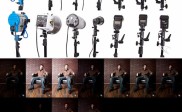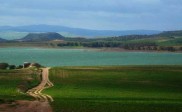The Art of Abstract Photography
Abstract photography is a technique that goes beyond the common habit of taking clearly identifiable images. When we take photos, we usually make sure that the subject is easily recognizable and in focus and that the scene is clear and defined. We want to know what we are looking at, and digital cameras are loaded with image stabilization features to make it easy for images to be clear and sharp. Yet, abstract photography can nourish our creative spirit by evoking emotions and impressions precisely by limiting literal interpretations.
What is Abstract Photography?
Abstract photography is a style or technique that makes use of the concepts of abstraction, which is to portray the subject figuratively, rather than literally. It tries to remove recognizable details that make us immediately identify what we are seeing. It strives to deviate from realistic reproductions and focuses on creative expression instead. Familiar subjects are shown in a new and unique light, and although we may not immediately identify them, we are entranced by the beauty of their shapes, colors, and how they make us feel certain emotions. When shooting abstract photography, we can make the subject partially or completely unrecognizable. It all depends on our creative vision and the visual and emotional impact we are trying to achieve.

Photo by tanakawho
Abstract Photography as an Artistic Medium
Abstraction has been in existence for centuries through paintings, sculpture, and other art forms. Its history is overflowing with masterpieces from brilliant artists such as Picasso and Kandinsky. Abstract photography is a relatively recent artistic medium by comparison, however, it has its share of creative photographers like Alan Babbitt or Wolfgang Tillmans. Abstract photography is quickly gaining popularity, especially with the advent of digital photography, everyday thousands of amateur and professional photographers are creating stunning abstract images.
Photo by Lincolnian (Brian) – BUSY
Lines, Shapes, Colors and Form are Essential in Abstract Photography
Since the subject is stripped of most, or all of the details that identify it as such, we rely on lines, shapes, colors, form, and even texture to create an artistic image. For example, by strategically focusing on a part of a plant and cropping out the rest, we can be left with a gorgeous image such as the one seen here:
Photo by macrophile
Although the subject is not immediately recognizable as a plant, it doesn’t really matter because the resulting image is a stunning capture of green elegance.
The powers of observation is important in abstract photography, because we have to look more closely at everyday objects we would otherwise ignore, and find the beauty and the ‘interestingness’ in them, which we can capture in a photograph. More importantly, these abstract photos are not just simply a composition of lines, shapes or colors. The viewer should ‘feel’ something when they look at the image, which will catch and hold their attention. This is where our photographic artistry and imagination become evident.
Examples of Abstract Photography Subjects
Common abstract subject matters are nature, architecture and household objects. Nature provides limitless abstract subjects, from animals to flowers to water to clouds. Intricate patterns and textures and gorgeous blends of colors are abundant everywhere in nature. Urban or architectural abstracts have their own distinct appeal, such as window patterns of skyscrapers, reflective glass, or structural shapes. We don’t even need to go out of the house to get great abstract subjects. If we look around, we might soon see that our table’s legs have a sleek shape, or that cracking paint in the corner makes interesting patterns.
Photo by Paul Stevenson
Abstract photography is the perfect way to flex our creative muscles, sharpen our observation skills, and captivate the viewer by inducing an emotional response.






